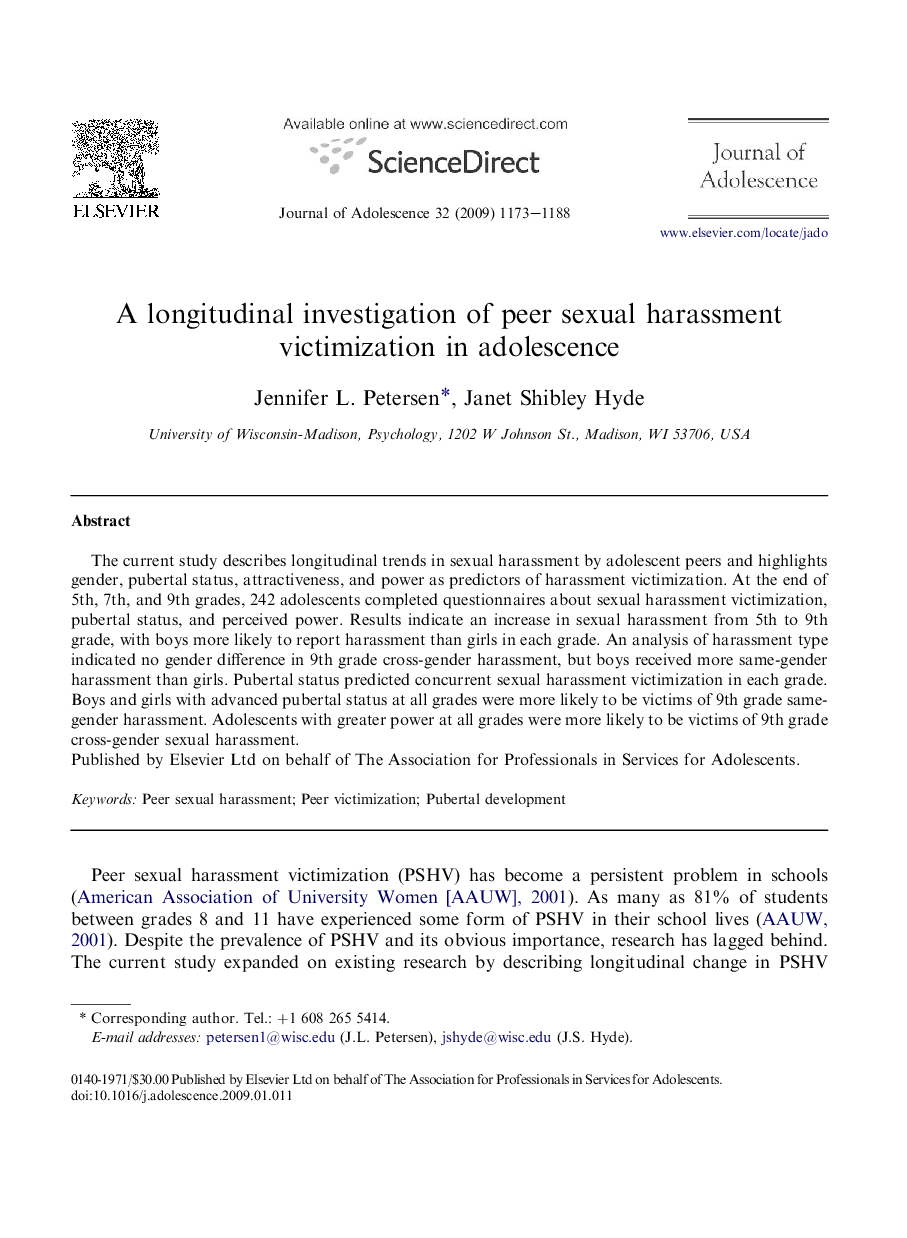| Article ID | Journal | Published Year | Pages | File Type |
|---|---|---|---|---|
| 881305 | Journal of Adolescence | 2009 | 16 Pages |
The current study describes longitudinal trends in sexual harassment by adolescent peers and highlights gender, pubertal status, attractiveness, and power as predictors of harassment victimization. At the end of 5th, 7th, and 9th grades, 242 adolescents completed questionnaires about sexual harassment victimization, pubertal status, and perceived power. Results indicate an increase in sexual harassment from 5th to 9th grade, with boys more likely to report harassment than girls in each grade. An analysis of harassment type indicated no gender difference in 9th grade cross-gender harassment, but boys received more same-gender harassment than girls. Pubertal status predicted concurrent sexual harassment victimization in each grade. Boys and girls with advanced pubertal status at all grades were more likely to be victims of 9th grade same-gender harassment. Adolescents with greater power at all grades were more likely to be victims of 9th grade cross-gender sexual harassment.
